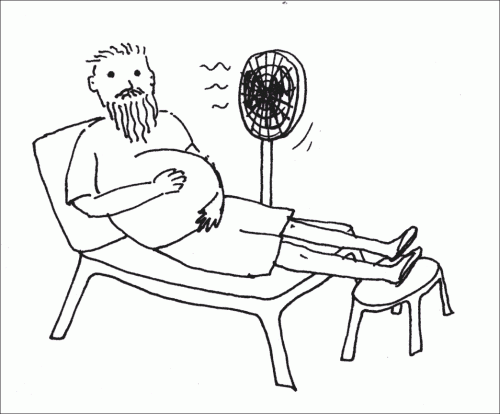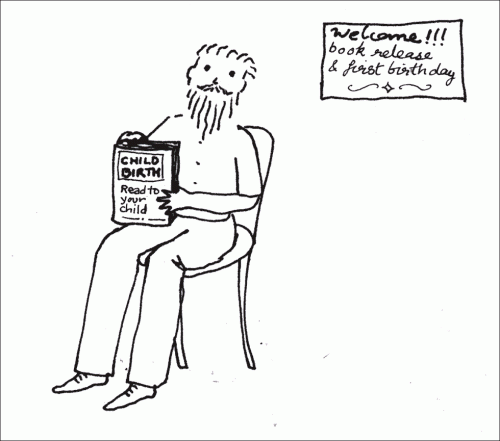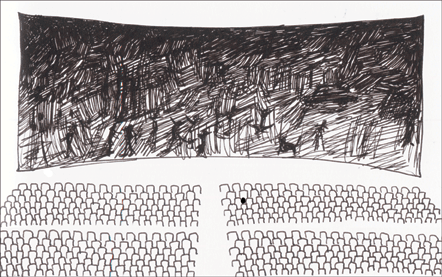Dear Readers,
I am now active on armeenkapadia.com
I may not be writing here too often.
See you there!
Dear Readers,
I am now active on armeenkapadia.com
I may not be writing here too often.
See you there!
The Tatas, one of India’s oldest and largest multinationals are planning to build (already started preparations for building) a port at Dhamra, Orissa, India. This spot is one of the very few nesting places of the very rare Oliver Ridley turtles, and if the port is completed that will be the end of them. There are other things you can do to help save the turtles. You can read about them here on the Greenpeace site.
Please take some action, however small. The port can be built anywhere. We can’t make new turtles. If the huge corporates don’t start realising the consequences of their actions, and taking responsibility of them, many eco-systems will be ruined forever. There is still time to stop them.
You can put this same ad on your blog or site to help spread awareness. And here is more on the whole story so far.
Why does it always have to be this way? Why is the price of so-called ‘progress’ so heavy? Maybe we need to redefine progress.
Here is a diagram, that is my understanding, till date, of the basic process of design. It could be anything from designing an airport, to making a dress.

Note to myself: Think big. But pay a hell of a lot of attention to detail. Hundreds of tiny details make the big picture.
You have to see a silent film to appreciate the strength of silence and sound both.
“I told the doctor I broke my leg in two places. He told me to quit going to those places.” – Henny Youngman

I saw a truck last night which had a compact disc stuck on the back as a reflector, and it was working pretty well gleaming there in the dark. A whole line of them stuck there would work brilliantly in dazzling the driver behind you. The masses in India are really innovative in the way they use and re-use and re-re-use things. This is because of poverty most of the time, but also due to a deeply ingrained philosophy that it is wrong to waste anything. Waste not, want not. We should learn from them. The traditional Indian village was largely self-sufficient, with little need to import things from neighbouring towns, and little waste. Lets hope we don’t lose this way of life and hopelessly go down the ‘we want more’ road.
A fellow student who went on an exchange programme to Italy was presenting her work and told us of how in Italy, bad looking vegetables are often thrown out during the long and complex sifting that vegeables go through there. The vegetable is actually edible, but is just a not so red (or green), maybe bruised, or unshapely. If that isn’t the most shockingly wasteful thing I have heard of, then I don’t know what is. If they just sent all those vegetables to India, a lot of us would gladly eat them.
Posted in society
Tagged compact disc, eat, india, innovation, poverty, re-use, save, truck, vegetables, waste
“Writing books is the closest men ever come to childbearing.” – Norman Mailer


I don’t know what it is about the cinema, I have always thoroughly enjoyed going to a movie in a cinema as far back as I can recall. There is something magical about it. In the darkness, its just you and the big screen. Some 40 plus feet of emotions, speed, the human experience projected in front of you in all its glory. And lets not forget the the magic of sound. A brilliant sound system just makes the whole thing come to life. In some theatres you can actually feel the sound traveling around you, from one side to the other. There is no fun watching a movie on the laptop, or even the television. The whole experience is somehow scaled down, and you can’t get lost in it, the way the big screen takes you in.

Before the multiplex boom hit India, I remember going to small theatres in our home town, Pune, where the tickets were really cheap (by today’s standards). Around Rs. 15 to Rs. 22. A ticket bought in ‘black’ (not at the ticket counter but from some illegal ticket seller outside) would be Rs. 30, and that was a lot. The theatres were stuffy, run down, with creaky fans, and non-functional air-conditioning. Still we went, braving the heat, poky seats, and sleazy crowd. The power supply in Pune fluctuates like mad, and this would affect the projector, so suddenly the movie would dim. This was most infuriating while watching movies like ‘The Dirty Dozen’.
English (by which I mean Hollywood) movies almost never lasted beyond a week, so we would race to watch them in the first week. Strangely, the best Hollywood flicks would come to the worst theatre, a small, stuffy, hot, lousy place ‘Vijay Talkies’, which was a mile away, a beastly Rs. 40 to 50 by rickshaw. Still we persisted in going there in desperate circumstances. We believed that any good movie, had to be seen in cinema, anything less was the ultimate sin. My sister and I went in the peak of the Indian summer to see some obscure Hollywood horror film. Vijay Talkies was so stuffy that we were almost faint at the end, and on exiting we felt the outdoors was air-conditioned instead.
Other theatres we frequented more were West End Cinema (a mix of English and Hindi films), Victory Cinema (purely Hindi cinema for the masses), and Rahul Talkies, again a mile away, but showing good Hollywood films, and much superior to the rest of the cinema halls. Snacks in these theatres were a cold drink, samosas or choco-bar ice cream. Never eat choco-bar in those old Indian cinema halls because they melt super fast, and in the dark drip quietly chocolate all over you. After watching the Lion King I came out looking like a chocolate Dalmation.
Post 2000 the multiplex phenomenon happened to India, and suddenly we had cinemas where the air-conditioning cooled, the seats were clean and comfy, and floor plushly carpeted, several different movies, and even more snacks to choose from at an American style snack bar. The magic of the big screen was amplified. Of course all this came at a price, nothing less than Rs 100 per ticket. Add to that the MacDonald’s burgers, the Pepsi, or the Barista coffee you had to have there, and you would spend nothing under 300. This meant that the demographic changed, and only the reasonably well off went to multiplexes, while the unwashed masses continued going to the old single screen cinema halls. I sampled both equally. For ‘timepass’ one went to the old style cinemas. For a good film which you were really waiting for you went to the multiplex. Either way the pull of the big screen was stronger than ever.
In Bombay (where I studied for 6 years), there were still lovely old cinema halls in ‘town’ (south Mumbai). These were the grand old ladies of Bombay, remnants of an era gone by. There was Sterling, in a quiet lane of VT, with its lovely floors. There was Metro, established by MGM, but now only screening blockbuster Hindi films. There was Eros, which I went to just once. My favourite was Regal, just a stroll from the Gateway of India. True to its name, it had a fantastic interior, from the Art Deco period, and it is now a Heritage building. These old cinemas were much cheaper than mutliplexes. Sometimes, us bored commercial artists, would bunk the morning of figure drawing, illustration or typography, and rush to the Regal on bus No. 83 or 84. (whichever came faster or was emptier). And then we would happily escape into the mysterious blackness of the cinema hall and forget who we were, as the big screen swallowed us up one more time.